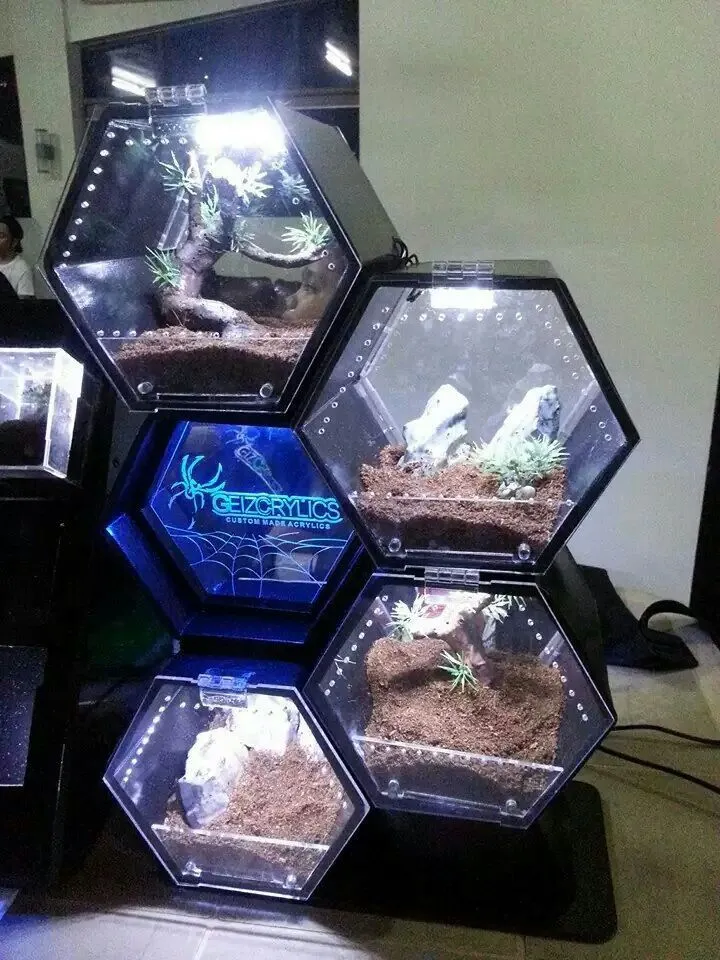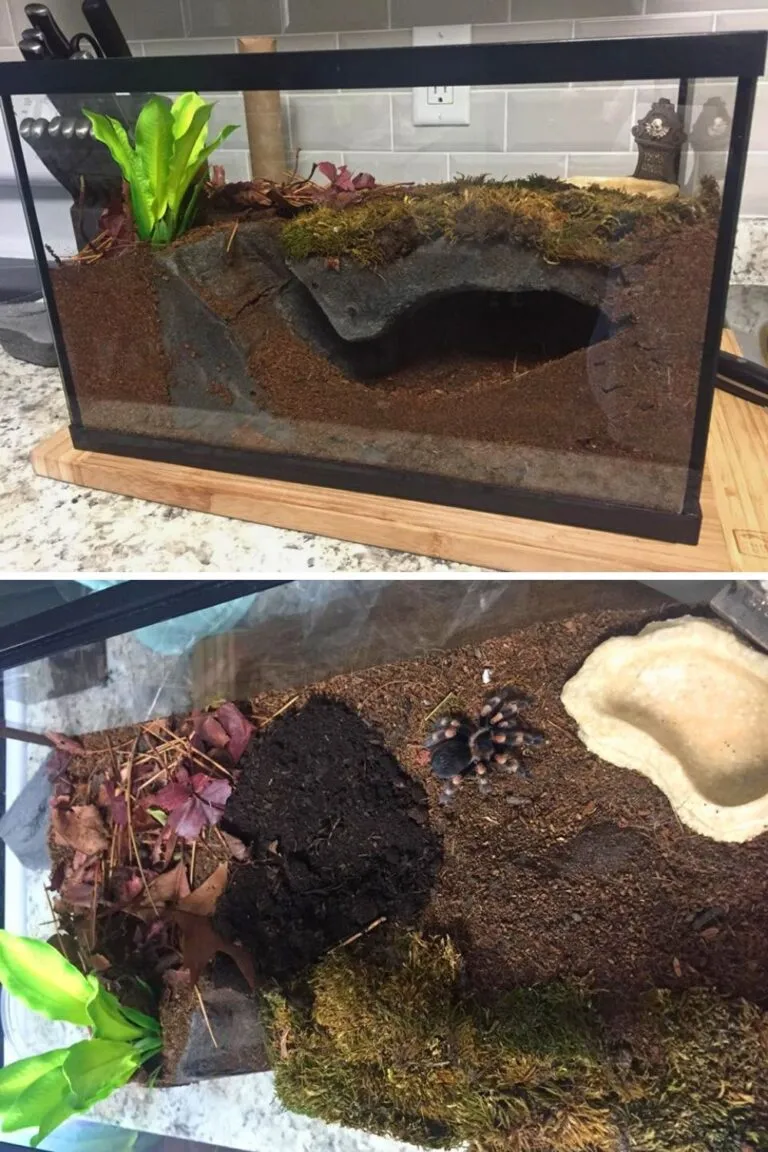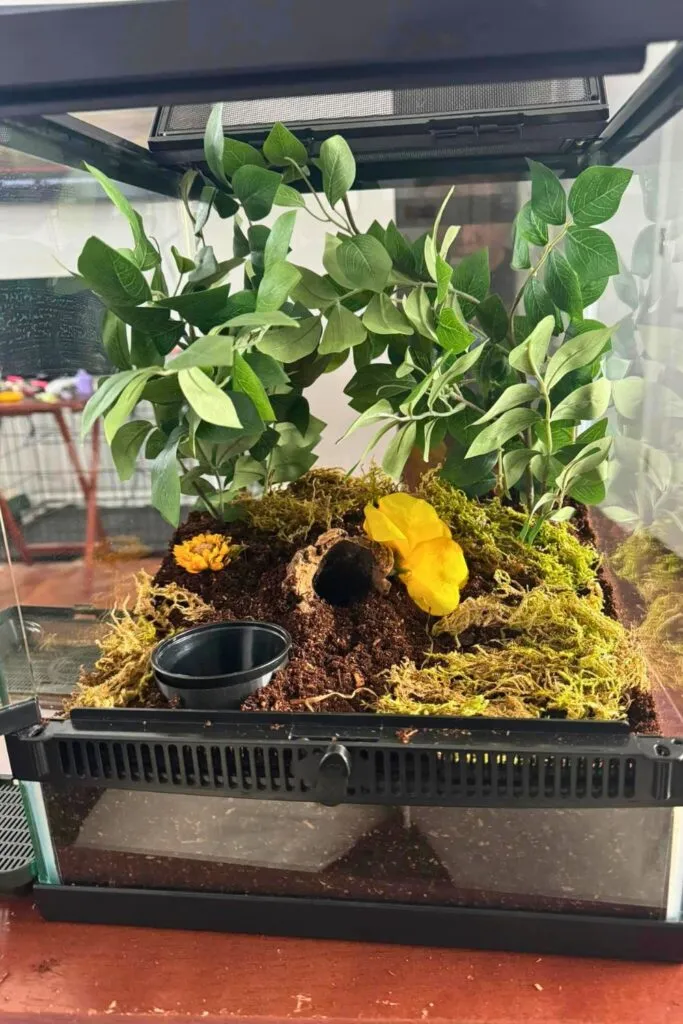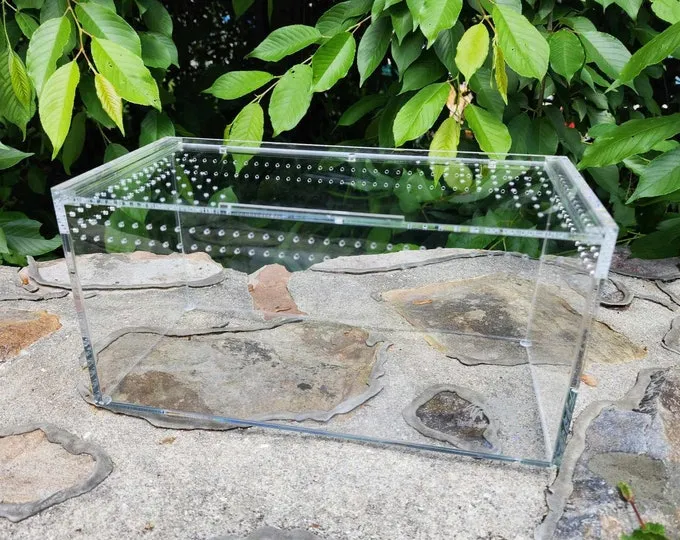Choosing the Right Enclosure Size for Your Tarantula
Setting up a terrestrial tarantula enclosure is a crucial first step in providing a comfortable and safe home for your eight-legged friend. The size of the enclosure is one of the most important factors to consider, as it directly impacts the tarantula’s well-being and ability to thrive. A too-small enclosure can restrict movement and cause stress, while a too-large enclosure may make it difficult for the tarantula to find food and feel secure. This guide will help you navigate the essentials of a proper tarantula enclosure setup, focusing on size, substrate, environment, and maintenance to ensure your tarantula’s happiness.
Considering Your Tarantula’s Species and Size
Different tarantula species have different requirements when it comes to enclosure size. A good rule of thumb is to provide an enclosure that is at least twice the tarantula’s leg span in width and length. For example, if your tarantula has a leg span of 4 inches, the enclosure should be at least 8 inches wide and 8 inches long. Height is also important, especially for arboreal species that like to climb, but for terrestrial tarantulas, it’s typically less critical. Consider the adult size of the species you are housing, as juveniles can be moved to larger enclosures as they grow. Research the specific needs of your tarantula species before setting up its enclosure. Some species are more active and require more space, while others are more sedentary and prefer a smaller area. A well-sized enclosure promotes a sense of security, allowing your tarantula to exhibit natural behaviors.
It’s also important to remember that tarantulas are ambush predators, so they don’t need a vast space to hunt. The focus should be on providing enough space for them to move around, molt, and establish a comfortable burrow or hiding spot. Overly large enclosures for small tarantulas can make them feel insecure and potentially lead to feeding issues because they may have trouble finding their food. A proper enclosure size will reduce stress, encourage feeding, and ultimately, improve your tarantula’s overall health and well-being. Ensure the enclosure has a secure lid to prevent escape.
The Importance of Ventilation

Adequate ventilation is paramount in a tarantula enclosure. Poor ventilation can lead to a buildup of humidity, which can cause mold growth and other health problems. Ventilation also helps to prevent the tarantula’s environment from becoming stagnant, ensuring fresh air circulation. Proper ventilation can be achieved through a variety of methods, including cross-ventilation and top ventilation. Ensure the enclosure has sufficient airflow to prevent the build-up of moisture. Enclosures should have strategically placed ventilation holes. These holes allow for the exchange of air, reducing the risk of respiratory issues for your tarantula. It also helps regulate the humidity level, which is crucial for maintaining the health of your tarantula. Good ventilation is as essential as the proper substrate or hide.
Selecting Appropriate Substrate
The substrate, or bedding, is a critical component of a terrestrial tarantula enclosure. It serves several purposes including providing a comfortable surface for the tarantula to walk on, acting as a moisture reservoir to maintain humidity levels, and allowing the tarantula to burrow and create a secure hiding place. The choice of substrate greatly impacts the overall health and happiness of your tarantula. The ideal substrate should be non-toxic, retain moisture, and allow for burrowing. The depth of the substrate is also crucial. Terrestrial tarantulas, in particular, will appreciate a substrate deep enough to burrow. This provides them with a sense of security and the ability to regulate their own microclimate. A well-chosen substrate can make a massive difference in your tarantula’s quality of life, while providing a naturalistic environment.
Understanding Substrate Types
Several substrate types are suitable for terrestrial tarantula enclosures. These include coconut fiber (also known as coco coir), peat moss, vermiculite, and a mix of these. Coconut fiber is a popular choice due to its excellent moisture retention, natural properties, and mold resistance. Peat moss is another viable option, but it should be used with caution as it can sometimes dry out quickly. Vermiculite is excellent for moisture retention and is often mixed with other substrates. The best choice will depend on the specific species of tarantula and the humidity requirements. Avoid using substrates that are harmful, such as wood shavings from certain types of wood, as these can be toxic to tarantulas. Always research the best substrate for your specific tarantula species before setting up its enclosure.
Maintaining Humidity Levels

Maintaining the correct humidity level is essential for a healthy tarantula. Humidity is crucial for molting and overall well-being, yet the required level depends on the species. Overly dry conditions can lead to molting problems and dehydration, while excessive humidity can encourage mold and fungal growth. Regularly monitor the humidity level using a hygrometer. To increase humidity, mist the enclosure with water, especially in areas where the substrate is drying out. The frequency of misting will depend on the substrate type, ventilation, and the ambient humidity in your home. Proper ventilation helps regulate humidity and prevents the environment from becoming too damp. Ensure the substrate is moist but not saturated; it should feel like a wrung-out sponge. Adjusting the humidity level is a continuous process that requires vigilance and attention to detail. Consistent and suitable humidity is a key part of tarantula enclosure setup.
Creating a Naturalistic Environment
A naturalistic environment is not just aesthetically pleasing but also beneficial for the tarantula’s psychological well-being. Providing a habitat that resembles the tarantula’s natural environment helps to reduce stress and encourage natural behaviors. This involves more than just the size of the enclosure; it involves the addition of elements that provide security, enrichment, and a sense of belonging for your tarantula. You can create a more stimulating and enriching environment for your tarantula. Replicating their natural habitat promotes natural behaviors, such as burrowing and exploring, contributing to their psychological well-being. The more closely you can replicate their natural environment, the more relaxed and content your tarantula is likely to be.
Adding Hides and Decorations
Hides and decorations are crucial components of a naturalistic tarantula enclosure. They provide shelter and security, allowing the tarantula to retreat and feel safe. Suitable hides can include cork bark, half logs, artificial caves, or even sturdy plastic or ceramic ornaments. When selecting hides, ensure they are appropriately sized for the tarantula to fit comfortably inside. Decorations, such as fake plants, rocks, and branches, add visual interest and can provide additional hiding spots. Make sure all decorations are non-toxic and don’t have sharp edges that could injure your tarantula. Arranging the enclosure to allow the tarantula to move around with the hiding places contributes to a more natural and engaging environment, reducing stress and improving overall welfare. Always prioritize the safety of your tarantula when adding decorations.
Providing a Water Source

Clean, fresh water is essential for your tarantula’s hydration. Provide a shallow water dish or bowl that is easily accessible. The water dish should be shallow enough to prevent the tarantula from drowning, especially for smaller specimens. The water should always be fresh, and the dish should be cleaned regularly to prevent bacterial growth. You can use a small, easily cleaned dish, such as a bottle cap or a shallow ceramic bowl. Water is also crucial for maintaining the proper humidity levels in the enclosure. Keeping your tarantula properly hydrated is vital to its health. Some keepers use a sponge in the water dish to prevent small crickets from drowning. Regularly check and refill the water dish to make sure your tarantula always has access to fresh water.
Temperature and Heating for Your Tarantula
Temperature is another critical factor in tarantula enclosure setup. Tarantulas are ectothermic, meaning they rely on external heat sources to regulate their body temperature. The ideal temperature range varies slightly depending on the species, but a general guideline is between 75-85°F (24-29°C). It is very important to research the specific temperature requirements of your tarantula species. If the temperature is too low, the tarantula’s metabolism will slow down, which can affect its appetite and overall health. Extreme heat can be lethal. Maintaining a stable temperature is key to a healthy, happy tarantula. Monitoring the enclosure’s temperature with a thermometer will allow you to adjust the heating system, if necessary. The proper temperature is as important as the right substrate or humidity for a healthy tarantula enclosure.
Monitoring and Maintaining Temperature
A reliable thermometer is essential for monitoring the temperature within the enclosure. Place the thermometer in an easily visible location, ideally on the side of the enclosure, to avoid disturbing the tarantula. Heating can be provided using various methods, such as heat mats, ceramic heat emitters, or a combination of both. Heat mats should be placed on the side of the enclosure, not underneath, to prevent the substrate from drying out too quickly. Ceramic heat emitters are a good option as they don’t produce light, and can be used day or night, provided with a thermostat to regulate temperature and prevent overheating. Regularly check the thermometer to ensure the temperature is within the desired range. Adjust the heating source accordingly to maintain a consistent temperature, and remember to always prioritize the safety of the tarantula. Proper monitoring is a crucial part of a healthy tarantula setup.
Avoiding Direct Heat Sources

Direct heat sources, such as incandescent bulbs, can be detrimental to tarantulas. These bulbs can dry out the enclosure and create localized hot spots that can burn the tarantula. Use indirect heat sources, such as heat mats or ceramic heat emitters, instead. Ensure the heat source is properly regulated by a thermostat to prevent overheating. Never place a heat mat directly under the enclosure, as this can cause the substrate to dry out and can potentially burn the tarantula. Always ensure there are no escape routes from the heat. Proper placement and monitoring are essential to ensure your tarantula is safe from harm. The overall goal is to create a stable thermal environment for your pet.
Essential Enclosure Setup Checklist
Before introducing your tarantula to its new home, create a checklist to ensure everything is in order. This should include verifying the correct enclosure size for the species, selecting the appropriate substrate, adding hides and decorations, providing a water source, and ensuring the temperature and humidity are within the correct ranges. A well-planned setup provides a safe and stress-free environment. Double-checking each step will prevent any last-minute surprises. Using a checklist can prevent mistakes that might be harmful to your tarantula. Make sure the enclosure is secure, and the lid fits tightly. A checklist will make your tarantula enclosure setup a successful one.
- Enclosure of appropriate size
- Correct Substrate
- Hides and Decorations
- Clean Water Source
- Correct Temperature Range
- Appropriate Humidity Levels
- Secure Lid
Regular Maintenance and Cleaning
Regular maintenance and cleaning are essential to maintaining a healthy and thriving environment for your tarantula. This involves removing any uneaten food, molted exoskeletons, and feces. Spot clean the enclosure regularly to remove any waste or debris. Depending on the substrate, a full substrate change might be necessary every few months, or as needed. Clean the water dish regularly to prevent bacterial growth. The frequency of cleaning depends on the size of the enclosure, the species, and the amount of waste produced. Cleaning helps to prevent mold growth, which can lead to health problems for your tarantula. It ensures a comfortable and hygienic living space for your pet, thus keeping the tarantula safe and happy. Regularly maintaining the enclosure is an act of care and responsibility.
Following these steps will provide a safe and enriching environment for your terrestrial tarantula, promoting its health and well-being. A well-prepared enclosure is key to the long-term success of tarantula ownership. Setting up your tarantula’s enclosure may seem daunting at first, but with proper research and care, you can create a habitat that will allow your eight-legged friend to thrive. Always prioritize the safety and well-being of your tarantula. Remember, a healthy tarantula is a happy tarantula.
